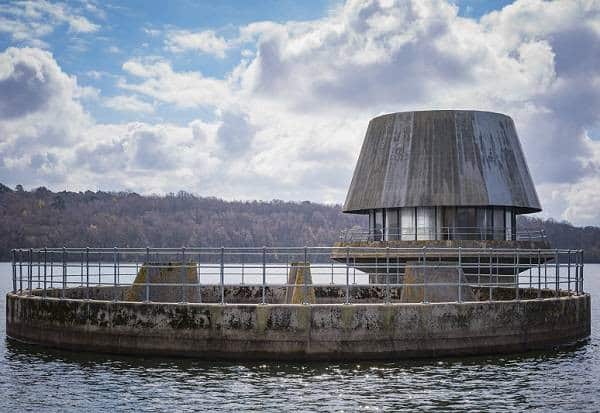t was as early as 1946 that the idea was conceived to build a reservoir to serve the Medway towns along with other parts of Kent and East Sussex. However it wasn’t until the 1960s that plans for this new source of drinking water began to gather pace and attention came to rest on the Bewl Valley between Lamberhurst and Ticehurst.
In the years immediately following the Second World War it was realised that the growing population in the South East of England would not be able to rely on traditional underground supplies of water forever. Instead it was decided that harnessing and storing surface water for times of need would be an invaluable investment for the future. Architects, planners and engineers wanted somewhere close enough to the target area to be practical yet at the same time avoid large-scale disruption.
The Bewl Valley seemed to be the perfect choice as it would not affect any major road or rail lines and there were very few people living in the immediate vicinity that would be affected. Furthermore, two major materials necessary for building the dam were available locally. These were clay, ideal for retaining water, and sandstone, both of which could be dug out of the ground nearby thus saving the cost of importing them.
The Queen gave Royal Assent to what was known as the Medway Water Act on 26th July 1968. This was the green light for work at Bewl and the project began in 1973.
A 900 metre long dam was constructed across the valley from clay excavated from the ground. This was strengthened with blocks of sandstone. The bank of the dam was covered in twelve inches of gravel underneath a layer of five inch concrete slabs to protect it from erosion. Pipes were built underneath the dam to enable the river Bewl to continue flowing.
Two large concrete towers were installed. The taller of the two was designed to draw off water when needed. The other was the overflow which was built to prevent the reservoir from getting too full.
The project was completed by the end of 1975 and when full, Bewl Water can hold up to 31 million litres of water and covers about 770 acres of land.
In 2004 work was completed on a pipeline connecting Bewl Water with Darwell Reservoir near Robertsbridge. At a cost of £25 million the 17km long stretch of piping was installed to help resupply this area of East Sussex during times of drought.
The Bewl Water site was acquired by Markerstudy Group at the end of 2015 and reopened officially in March 2016. Since then various upgrades, additions and events have been arranged including fishing competitions, a new water taxi and the opening of a brand new bistro restaurant.
Make sure you check out the all of our activities and events for more information about what to do on your next visit to Bewl Water.



